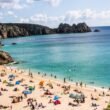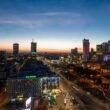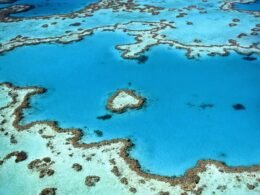What was supposed to be a happy family holiday to Greece ended in tragedy. A huge rock fell from a hillside and crushed two rooms at a coastal hotel on the island of Crete.
The landslide happened in the early hours of Sunday, 30 October, at the Markos Studios, a family-run beachside complex of rooms built under a rocky hillside at Ierapetra.
The rock fell and crushed two rooms, killing a 47-year-old Slovenian woman as she slept and injuring her eight-year-old son.
Police have confirmed that the rock destroyed two rooms at the accommodation. The victim’s 51-year-old husband was in a different room and was unhurt.
The mother and son were buried under the debris.
Around 50 firefighters rushed to the area and managed to rescue the boy after an hour of digging through the rubble. The boy’s mother was, unfortunately, found dead.
The family of three was due to leave the island on Sunday morning.

Another incidence similar to the one in Crete occurred on the Greek island of Zakynthos in early September this year.
Greek authorities had to close off the famous Navagio Beach, or Shipwreck Beach, following a landslide caused by an earthquake that hit nearby Kefalonia.
Videos were posted to social media showing the major landslide on the left cliff of the beach that is visited by thousands of people every day.
In 2018, seven people were injured in a landslide on the same beach. At the time of the incident, Greek authorities shut down the beach, and it was off-limits for tourists until April 2019.
Following the incident in 2018, new security measures were laid out to prevent injuries from happening again. Navagio Beach has been divided into three zones. The first allows free access, while the second zone allows only for restricted use following rainfall or earthquakes. The third zone on the beach is completely closed to all visitors.
Navagio Beach is one of the most popular beaches in Greece and the second-most photographed site in the country.
Hazard of Rockfalls in Greece

Due to the geological structure of Greece, slope movements, which occur in the form of rockfall, have a relatively high frequency.
According to the Bulletin of the Geological Society of Greece (BGSG), rockfall intensity in Greece increases during periods of low temperature and high rainfall.
Between 2000-2010, there was an increase in the number of rockfalls due to intense rainfall events and earthquakes. The major rockfall at Tempi Valley in 2009 led to the death of a person and the closure of a section of the Athens-Thessaloniki national road for several months.
Other rockfall events in Greece that led to deaths include Kakia Scala (2010), Santorini (2011) and Kefalari, Argos (2012).
According to the BGSG, the human deaths due to rockfalls in Greece is 11%, which is considered exceptionally high. However, like the beach on Zakynthos, safety measures have been put in place in those areas prone to rockfalls.














